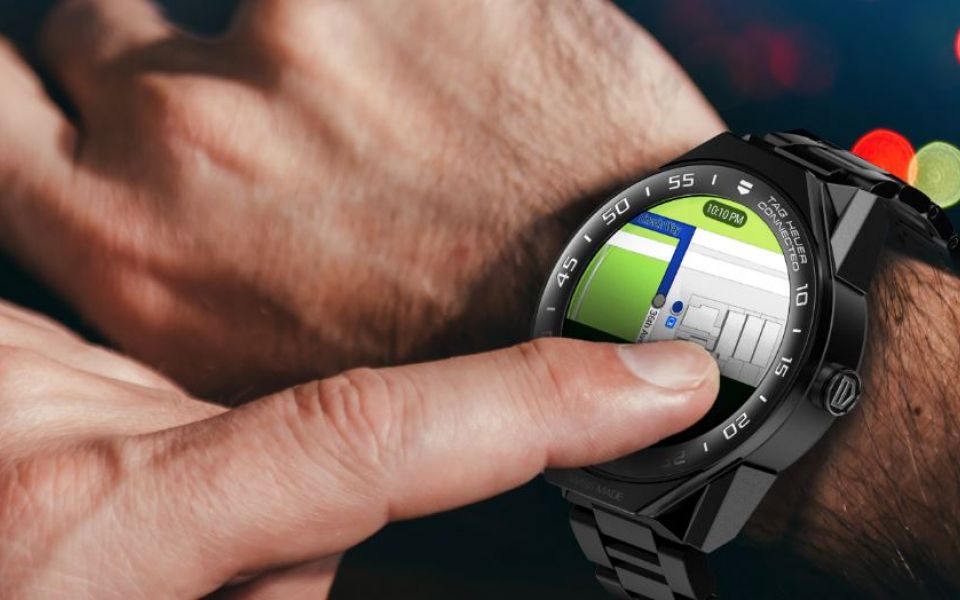
Traditional v Smart? We explore the best technical watches out there

Traditional v Smart? We explore the best technical watches out there
How Swiss watch brands match up in the digital age.
Swiss watchmakers have long been creating highly technical, complex watches. Innovative materials, professional capabilities and micro-engineering to a hair’s breadth have led to major horological advancements, and none more so than in today’s market. But in the age of wearable technology, how do Swiss watch brands match up?
Traditional watches
The world of horology has forged ahead with pioneering innovation, ever since the first portable clock or ‘wearable tech’ pocket watch was invented in the early 16th century. Traditional watches have an enduring quality, holding their value and even gaining it in many cases. Dependent on cogs and springs, rather than software, a mechanical watch can be passed down from generation to generation. But, this doesn’t mean a lack in technical advancement.
“The traditional wristwatch is one of the most technologically advanced gadgets to have ever appeared, and it continues to evolve with the times.”
Tim Barber, Editor of QP magazine
Lifetime value
Panerai’s new Lab:id model, launched at watch fair SIHH in January this year, is a great example of real innovation in watchmaking. Made from a new carbon-based material, making it extremely light, the material is so black that it completely absorbs the light. The watch doesn’t use any lubricant within the movement, an incredible technical feat, meaning there is very little friction and damage over time. Panerai has guaranteed the Lab:id for 50 years as a result.
Although smartwatches are considerably cheaper, you have to remember that the technology is still developing. Like a smartphone, you may need to end up replacing your watch every few years, unlike the lifetime service you get from a mechanical watch.
Durability
We’ve all dropped our phones and cracked the screens, sadly too often in my case, and smartwatches have the same propensity for collateral damage. But look to your Swiss counterparts and the stringent tests that some models go through, you’re in no danger of cracking or damaging them any time soon.
British watch brand Bremont has a collection of watches (the Martin Baker range) so shock resistant that they can be fired out of an ejector seat from a plane and land to tell the tale, still fully functioning.
Whilst Swiss watch brand Breitling puts every single watch it sells through a stringent series of tests. Called ‘chronometer-certified,’ this high-level quality control testing means that all of its watches have chronometer-certified movements, an independent proof of accuracy. Breitling is one of the few brands that test 100 per cent of their watches to this high level of specification.
Complexity
Heralded as “the most complex watch ever created” at this year’s SIHH trade show launch, Greubel Forsey’s new Grande Sonnerie took eleven years of research and development, two patents and at least 935 parts to create.
Housed within a super light-weight titanium acoustic resonance cage for a “pure sound”, the manually wound watch features a silent striking regulator and Tourbillon 24 Secondes. The sheer complexity of this watch is breathtaking, strapped to your wrist it is a highly advanced and technical piece of micro-engineering.
Water Resistance
Mechanical watches can be highly water resistance and none more so than a Rolex, with the brand inventing the first waterproof wristwatch, the Oyster. For over a century, Rolex watches have accompanied explorers, divers and professionals on their missions leading to new innovations and technical advancements, even beyond the realms of human capability.
The Rolex Deepsea is water resistant to a depth of 3,900 metres, with an innovative Ringlock System which allows the case to withstand water pressure equivalent to a weight of three tonnes on the crystal. The core components of this intricate case are made in the toughest aerospace‐grade materials available. The Deepsea can go deeper than all but a few purpose‐built research submersibles and more than 100 times beyond the depth that any human could physically survive.
Craftsmanship
In today’s digitalised world there’s a new mainstream appreciation for all things crafted, as we value the time and care of something that has been worked on by hand. Many hundreds of man-hours go into the production of a traditional watch, along with centuries of fine-tuned techniques.
The more you delve into the background of a watch and its heritage, you more you understand the true value of it. A brand, such as Jaeger-LeCoultre, has the ability to make most watch components in-house, not just movements. This requires an exceptional level of skill and gives them huge control over quality.
Audemars Piguet’s iconic bracelet alone takes 8 hours to polish by hand. Every fine detail of the watch has been worked on by master watchmakers and craftsman. Processes can be sped up but you lose the precision and quality that comes with a luxury item and that so many Swiss watch brands pride themselves on.
*Extracted from original piece by Emily Seares*
Read full article here